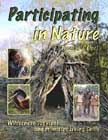| Thomas J. Elpel's Web World Portal  BraintanBuckskin.com | 


 BraintanBuckskin.com
BraintanBuckskin.comHide tanning, crafting, sewing, and fashion. Home | About Melvin Beattie | Hide Tanning DVD | Notes & Updates | Classes Deer | Elk | Moose | Buffalo | Crafting and Sewing | Fashion Gallery | Indian Arts & Crafts Act |
|
Tanning Spirit Notes and Updates 
Option (1) After the hide is fleshed, it is easy to continue working a fresh hide. Place the hide in a container; a 5-gallon plastic bucket will usually handle the largest deer hide. Add enough water to cover the hide. Don't use hot water. Another word of caution: Don't use city water that is treated with chlorine, as it makes the hide very hard to dehair and work, if not impossible. New Notes on Soaking Remove rolled, salted hide from the airtight contonier, unroll and shake the hide to remove any salt that will come off. Two options: First, if the hide is moist enough to scrape the salt off, I will do that then put the hide into a 35 gallon plastic barrel that has 20-25 gallons of fresh water. Periodically, over the next three days, stir the hide, leaving the hair side up, and put a lid on it. The longer that a hide rehydrates, the easier it will be to remove the grain. There are times I leave it four days, and the hair is beginning to slip before I move it to the next step of bucking. Want to make your own buckskin clothing? Return to BraintanBuckskin.com Home Page |
|
Looking for life-changing resources? Check out these books by Thomas J. Elpel:
|
|
|






